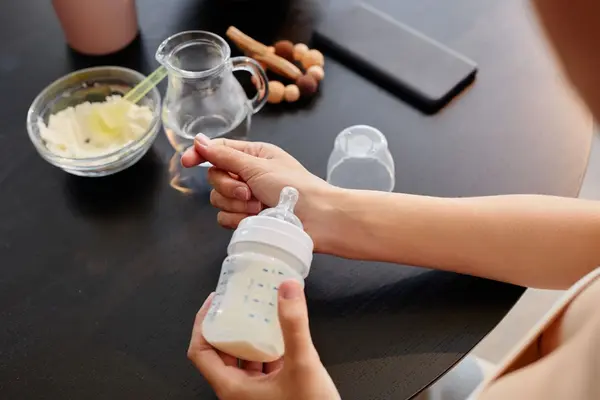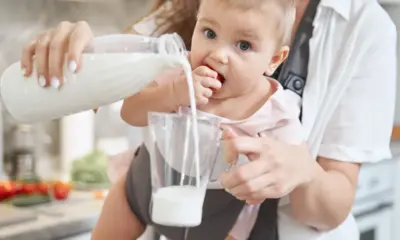Breastfeeding & Baby Feeding
How Much Formula Does Your Baby Need?

Formula feeding gives parents peace of mind because they can measure how much their baby drinks at every feeding. Still, knowing the right formula amount for babies can be tricky. Their intake changes with growth, and babies may drink more or less on different days.
Understanding your baby’s feeding needs helps ensure healthy development and growth, so let’s break it down by age and weight.
How Much Formula Does a Newborn Need?
During the first few days, your baby will need very small amounts. Start with 1 to 2 ounces every 2 to 3 hours.
By the end of the first week, your newborn may take 2 to 3 ounces every 3 to 4 hours. Feed them on demand at first.
Watch for Early Hunger Signs
Don’t wait for crying. Instead, watch for:
- Lip smacking
- Rooting or turning their head
- Putting hands in their mouth
- Sucking sounds or alertness
Catching these signs early helps keep feeding smooth and stress-free.
Formula Amount Guidelines by Weight
Use this rough guide to calculate daily intake based on your baby’s weight:
- 6 pounds: 15 ounces
- 7 pounds: 17.5 ounces
- 8 pounds: 20 ounces
- 9 pounds: 22.5 ounces
- 10 pounds: 25 ounces
Multiply your baby’s weight in pounds by 2.5 to estimate daily ounces. Never exceed 32 ounces in 24 hours.
Every Baby Is Different
These are estimates. Some babies need slightly more or less. Pay attention to growth and hunger cues.
Formula Amount by Age
As babies grow, they need more at each feeding but fewer bottles overall. Here’s a quick reference:
- 1 month: 3–4 oz every 3–4 hours
- 2 months: 4–5 oz every 3–4 hours
- 4 months: 4–6 oz, 4–6 times daily
- 6 months: 6–8 oz, 4–5 times daily
- 8–12 months: 7–8 oz, 3–4 times daily
When to Stop Formula
At one year old, babies can switch to whole milk. Offer 16–24 ounces daily and focus on solid foods.
Signs Your Baby Is Getting Enough
Babies show clear signs when they’re eating the right formula amount for babies. Look for:
- Steady weight gain: Consistent growth based on pediatric checkups
- Wet diapers: 5 to 6 wet diapers daily after the first week
- Satisfied mood: Calm and relaxed after feeding
If you notice any of these signs regularly, your baby is likely getting the right amount.
Signs of Overfeeding
While most babies self-regulate, overfeeding can happen. Watch for:
- Vomiting after feeds: Not to be confused with normal spit-up
- Tense tummy or gas pain: Legs pulled in or visible discomfort
Avoid pressuring your baby to finish every bottle. Let them decide when they’re full.
Smart Formula Feeding Tips
Feeding should be stress-free for both of you. Try these tips:
- Don’t offer a bottle with every cry
- Use feeding time to bond
- Expect extra hunger during growth spurts
- Keep a clean bottle routine to prevent bacteria
Frequently Asked Questions
Q: Can I use charts to decide how much to feed?
A: Yes, but use them only as a starting point. Always adjust based on your baby’s cues.
Q: Can a baby have too much formula?
A: Yes. Overfeeding may lead to gas or vomiting. Watch their mood and weight gain closely.
Q: Should babies finish every bottle?
A: No. Let them stop when they’re full. Pushing more can lead to discomfort.
Explore more expert tips and parenting advice on our website today!










